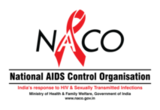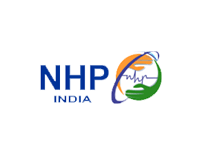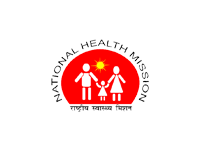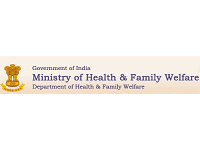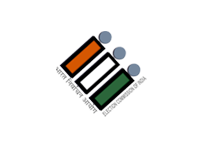Prevention and control of HIV/AIDS epidemic require organisation of resources, technology and concerted effort both at local and global level. The costs of prevention and control are high. In India a number of international organisations are working with the National AIDS Control Organisation (NACO) in addressing HIV/AIDS issue by contributing their technical expertise and financial resources. This collaboration is as old as the government programmes on HIV/AIDS.
Under National AIDS Control Programme III, the following organisations are associated with NACO and its programme:
The Joint United Nations Programme on HIV/AIDS (UNAIDS)
UNAIDS unaids , is the main advocate for global action on the epidemic. It brings together ten UN agencies in a common effort to fight the epidemic. Cosponsors include UNHCR, UNICEF, WFP, UNDP, UNFPA, UNODC, ILO, UNESCO, WHO and the World Bank.
The global mission of UNAIDS is to lead, strengthen and support an expanded response to the epidemic that aims at preventing transmission of HIV, providing care and support, reducing vulnerability of individuals and communities to HIV/AIDS, and alleviating the impact of the epidemic.
The mandate of UNAIDS in India is carried out through the Joint UN Team on AIDS and the Theme Group on HIV/AIDS, with representatives from each cosponsor. UNAIDS works closely with the Government through the National AIDS Control Organization and other key partners including State AIDS Control Societies, civil society, the academia, the private sector etc., to share knowledge, skills and experience to lead the fight against HIV.
Specifically, UNAIDS supports the national response to HIV and AIDS by promoting:
- Strengthened leadership and resource mobilization for a broad-based response at all levels, including governments, civil society and people living with HIV.
- Improved planning, financing, technical assistance and coordination at all levels for a sustainable multi-sectoral response to the epidemic, integrated with national development efforts.
- Strengthened evidence base of the response through greater availability and use of strategic information from better monitoring and evaluation, surveillance, and resource tracking.
- Enhanced human resources and robust delivery systems at all levels of government, civil society and other non-state partners.
- Strengthened human rights-based and gender-responsive policies to reduce stigma and discrimination.
- Increased coverage and sustainability of programmes for injecting drug users, men having sex with men and sex workers.
- Increased coverage and sustainability of programmes to address the vulnerability of women and girls, young people, emergency-affected populations and uniformed personnel.
Australian AID (AusAID)
The Government's overseas aid programme is managed by the Australian Agency of International Development (AusAID). The key priority sector for Australia's aid programme in India is health, and it includes HIV/AIDS, education, and water and sanitation.
AusAID has an agreement with UNAIDS for the South Asia region, under which it supports several regional initiatives, including an HIV/AIDS programme for the Northeast region in India. AusAID’s regional office for the South Asia region is based in Colombo.
British AID (DFID)
Department for International Development (DFID), India supports the Government of India’s efforts towards achieving the poverty reduction objectives as outlined in the Eleventh Five Year Plan and Millennium Development Goals (MDGs) laid down by the UN.
Substantial resources have also been invested in select centrally-sponsored schemes in health and education sector in the past couple of years. These are national programmes primarily financed by the Government of India but with a variable counterpart share from state governments.
Support for the HIV programme has moved from projects and direct support to the states in the 90s to a programme approach and support for the national programme under NACP-III, where DFID is the first donor to go for pooled funding. DFID’s experience in the five states in the initial years contributed in a large way in influencing national policy and the formulation of future phases of the national programme.
US Government Assistance (USG)
USG assistance has been received through several agencies and programmes, including USAID, CDC, PEPFAR (The United States President’s Emergency Plan for AIDS Relief) etc. USAID implements HIV/AIDS prevention, care and treatment as part of the President’s Emergency Plan for AIDS Relief. Efforts include HIV prevention in high prevalence states and among high-risk groups, and care and support to children infected or affected by HIV/AIDS.
The USG programmes focus on reducing HIV transmission through behaviour change communication among vulnerable populations. In 2004, USAID scaled up care and support activities. CDC provides technical assistance and training to NACO in HIV/AIDS control and prevention.
German AID (GTZ)
GTZ’s objective is to transform the national health system to meet increasing demands in an equitable and affordable manner. Its Health Sector Support Programme (HSS) makes a major contribution to the reform process through technical cooperation at the national level and in the states of Himachal Pradesh, Maharashtra and West Bengal.
The HIV/AIDS programme operates within the framework of the National AIDS Control Programme. HSS facilitates dialogue with industry associations and civil society groups to promote more effective services and products for HIV/AIDS prevention. A multi-stakeholder “round-table” in Delhi triggered a strategy for a safe city (City Action Plan) based on the principle of harm minimisation in vulnerable groups.
Bill and Melinda Gates Foundation (BMGF)
The Bill and Melinda Gates Foundation (BMGF) focuses on improving health, reducing extreme poverty and increasing access to technology in public libraries.
While normally BMGF does not get involved in service delivery and/or scaling up of operations in India, the Foundation through its liaison office (Avahan) directs service delivery and scaling up of HIV prevention services towards attaining high coverage. The Foundation funds research, notably in the area of products for neglected diseases.
The Avahan Grant is completely unique in the history of the Foundation. In the year 2005 it received a grant of $200 million to scale up prevention interventions in six high-prevalence states in India. Additional grants were added by the BMGF. The major grantees included FHI, University of Manitoba, HIV/AIDS Alliance, Hindustan Latex Family Planning Promotion Trust (HLFPPT), VHS, University of Lavall, Constella Futures, Australian International Health Institute, Path Finder, Path etc.
Clinton Foundation (CF)
The Clinton Foundation (CF) established its programme in India in the year 2004, working very closely with NACO in partnership with UNAIDS. It supports the efforts of the government in care and treatment programme for people living with HIV/AIDS. The Foundation set for itself a target of supporting treatment for 100,000 HIV/AIDS patients by 2007. Towards that goal it helped in training of private doctors, providing CD4 machines and technical consultants to NACO specifically for GFATM implementation. Clinton Foundation has made available high level of training for the Government of India by periodically bringing large number of technical experts from around the world.
Global Fund for AIDS, TB and Malaria (GFATM)
The Global Fund for HIV/AIDS, Tuberculosis and Malaria (GFATM) is an international health-financing mechanism, which is committed to accelerating the reduction in morbidity and mortality caused by HIV/AIDS, TB and Malaria.
Since its inception in 2002, the GFATM has committed $7.1 billion to over 136 countries through approximately 450 grants. The Global Fund is responsible for an estimated 20 percent of all international funding in support of efforts to combat HIV/AIDS, and approximately two-thirds of global funding for programmes against TB and Malaria.
Proposals for global funding are submitted through the Country Coordinating Mechanism (CCM) for a period of five years, of which the initial funding for Phase I is for two years followed by Phase II for the remaining three years.
International Labour Organization (ILO)
The ILO, in consultation with its Indian tripartite constituents and NACO, has developed a three-phased HIV/AIDS programme, aimed at establishing a sustainable national action on HIV/AIDS prevention, care and support in workplace. ILO works in close partnership with the Ministry of Labour.
In terms of financial support, ILO operates with fairly modest budgets; however, they have major achievements in workplace. Their ongoing relationship with the National Labour Institute, workers' unions and the private sector has been effective in influencing policy, allocation of budgets and overall support of the management. iol
United Nations Development Programme (UNDP)
UNDP’s global mandate is to promote and foster human development and eliminate poverty. The current UNDP-Government of India Country Programme (2003-2007) seeks to support the Tenth Five Year Plan goals of human development and people-centred growth in a manner consistent with the two goals of the UN Development Assistance Framework viz. strengthening decentralisation and promoting gender equality.
UNDP’s role in HIV was fairly minimal until 2004, except a few programmes with NGOs, private sector and positive networks. By 2005, UNDP set up its HIV/AIDS Unit. It received support from DFID for the initiatives to control trafficking and HIV/AIDS.
It has also initiated specific programmes/studies around health insurance and macro-economic impact of HIV. Under NACP-III, UNDP has offered financial support to NACO for expanding the mainstreaming initiative at the level of NACO and SACS.
UNFPA
UNFPA supports countries in using population data for policies and programmes to reduce poverty and assist in providing quality reproductive health and family planning services.
The UNFPA Fifth Country Programme (1997-2002) of $100 million was the organisation’s largest assistance programme worldwide. It was designed to reflect agenda post International Conference on Population and Development (ICPD).
UNFPA Country Office has established case management services for Reproductive Tract Infections (RTIs) and Sexually Transmitted Diseases (STIs). It works closely with the primary health care centres and laboratories. Currently, UNFPA has three major interventions: promotion of condoms for dual protection, provision of RTI services at primary health centres and community activities to orient panchayat members on HIV/AIDS.
United Nations Office of Drug Control & Crime in South Asia (UNODC)
UNODC, in partnership with the Ministry of Social Justice and Empowerment, is working towards mainstreaming HIV/AIDS and drug abuse concerns in the ongoing programmes supported by the government. A majority of UNODC, ongoing and completed projects aim to prevent the spread of drug use and related drug-abuse-driven HIV transmission, especially among vulnerable population.
UNODC, in collaboration with the Ministry of Health and Family Welfare, launched the “I Decide” campaign under the National Drug Abuse Prevention Programme. In addition, it took a number of initiatives for reducing drug use. Needle exchange (and bleaching) programmes and pilot drug substitution programmes were also started in Manipur.
In drug demand reduction, UNODC has supported two projects in India — “Community Wide Demand Reduction in India” and “Community Wide Demand Reduction in the North-Eastern states of India”. Efforts are geared to mainstream HIV/AIDS concern in the ongoing Drug Demand Reduction programmes.
United Nations Children’s Fund (UNICEF)
UNICEF has been working in India since 1949. The largest UN organisation in the country, it is currently implementing a $400 million programme (2003-2007).
India Country Programme of UNICEF (2003-2007) has a focus on HIV. Prior to 2003, UNICEF supported small initiatives with street children and a few communication activities. In the initial years of the programme, UNICEF focused on initiating interventions with young people in the states of Maharashtra and Andhra Pradesh.
Subsequently, UNICEF undertook a feasibility study for the PPTCT programme and launched the programme at a few centres. It set a goal to set up 780 such centres by 2005-06 across India so that pregnant women with HIV have access to appropriate interventions, especially at the time of labour. Around 235 centres are currently functional. UNICEF assistance supports a package of services that offers counselling, testing and anti-retroviral treatment to pregnant HIV positive women.
World Bank (WB)
The World Bank Country Strategy (CAS) goals for India for 2005-2008 are:
- Poverty Reduction.
- Helping India to move closer to achieving the Millennium Development Goals.
- Improving the people’s standard of living.
The strategy is closely aligned with the Government of India’s poverty reduction programme. The Bank is increasingly focusing on providing analytical reports on the country’s major development challenges and extending advice to policy-makers by sharing good experiences from within the country and abroad.
In 1991 the Government of India and the World Bank expanded their collaboration in infectious diseases control programmes, and by 1992 the first National AIDS Control Project was launched with a World Bank credit of $84 million. For the second phase of the National AIDS Control Programme, a World Bank credit of $191 million was provided. The Bank has worked closely with the Government of India and other donors in the preparation of the third National HIV/AIDS Control Programme.
World Health Organization (WHO)
WHO’s Country Office in India (WCO-India) has a long history of supporting several programmes of Ministry of Health and Family Welfare, Government of India. The Country Cooperation Strategy (CCS) developed by WHO India for the period 2006-2011 forms the basis for delivering technical assistance in collaboration with the Government of India, the states, development partners and civil society.
When the National AIDS Control Programme was launched, WHO assisted the GoI in the formulation of strategy and plan for the implementation of prevention and control activities. In 1989, WHO supported the development of a medium-term plan for HIV/AIDS control in Maharashtra, Tamil Nadu, West Bengal, Manipur and Delhi, with a $10 million budget mobilised from different sources.
In 1990-91, WHO supported the launch of Unlinked Anonymous Surveillance to track the epidemic. In 1992, following the launch of National AIDS Project–I, WHO assisted in the planning and implementation of a spectrum of activities such as education and awareness programme, blood safety, hospital infection control, condom promotion, strengthening of clinical services for both STD and HIV/AIDS.
IAVI
The International AIDS Vaccine Initiative (IAVI) is a global not-for-profit public-private partnership working to accelerate the development of a vaccine to prevent HIV infection and AIDS for use throughout the world.
Founded in 1996, IAVI researches and develops vaccines, conducts policy analyses and serves as an advocate in this field with offices in Africa, India and Europe. IAVI supports a comprehensive approach to HIV/AIDS that balances the expansion and strengthening of existing HIV prevention and treatment programmes with targeted investments in new AIDS prevention technologies.
In India, IAVI has entered into an agreement with the Ministry of Health and Family Welfare through the National AIDS Control Organisation (NACO) and the Indian Council of Medical Research (ICMR) to develop a vaccine for prevention of AIDS in India. IAVI also collaborates with the Ministry of Science and Technology, through the Department of Biotechnology and the Council of Scientific and Industrial Research, to advance research on the design and development of new AIDS vaccines. For details on the IAVI India programme, please visit:iavi








